6 Ways to use the Rally Break
Players who understand how to use the rally break have an advantage
Have you thought about using the break between points to prepare yourself for the next rally?
It’s an opportunity that should be used. If you have never practiced what to do and think during this time, start now, you may be surprised at all you can achieve.
 It doesn’t matter if you have won or lost the previous rally. This is an opportunity to start the next rally with a positive thought and intent. However, what could you be doing and thinking? Are there proven things that other players are doing to trigger the emotions they need?
It doesn’t matter if you have won or lost the previous rally. This is an opportunity to start the next rally with a positive thought and intent. However, what could you be doing and thinking? Are there proven things that other players are doing to trigger the emotions they need?
Once you know what you could do, how can you include it in practice so that it is immediately effective in a match.
The tips below concentrate on the time between points, the rally break. They will give you ideas, and direct advice on how to practice using the rally break and also to get a general view on playing the Big Points
If you haven’t read the post 6 Ways to prepare & practice for the Big points!
I recommend you do that now. click here.
– – – – – – – – – – – – – – – – – –
1 Use the Rally Break: how, when, what
2 Diminish and start to control the emotion
3 Self-Talk & Trigger Words
4 How to focus your attention
5 It’s all in a Ritual – the most important tip here
6 Practice with Intent & Learn to use the rally break
– – – – – – – – – – – – – – – –
1 Use the Rally break: how, when, what
All the suggestions in this post start as soon as the last rally finishes. The moment the shuttle hits the floor you should be using the time to help yourself. You have until the next rally starts. Remember, there is no set time, although the umpire may encourage you to start faster if they think you are taking too long.
There is plenty of time IF you use it and know how to create more time
What to do if you have won or lost the last point
You have lost the point

- If the shuttle lands on your side of the court, please don’t just flick it back quickly under the net.
- Make it your ritual to pick it up, walk back to the centre of the court and then hit it to your opponent.
- If you feel emotional then start to Diminish the emotion or use it to your advantage (see point no.2 )
- Start to plan
You have won the point
- Immediately congratulate yourself for winning the last rally, this is important! Be your biggest supporter.
- If the opponent had made an error, then ‘Thank them!’
- Start to plan
As you move to the centre of the court
- Look at and be aware of your opponent and their immediate actions.
- What can you see or feel from the way they are moving?
- Do you think that their mental state has altered?
Questions to ask yourself
- Do I need to change the shuttle – focus on the condition of the shuttle?
- Do I need to say something to myself? (look out for a future post: 6 ways to improve your self-talk)
- What did I learn from the last rally or previous 3 rallies?
- Has my impression of my opponent changed in any way?
- Do I need to change my plan?
Actions to take
- Complete your planning and trust it.
- Start your Serving or Receiving Ritual
Remember
You don’t have to make any changes or decisions in the Rally Break. In fact, I hope that you are feeling generally ok and ready to continue the challenge. The advice above and in the rest of the post should be used at all times not just at the Big Points. Do it so often that it becomes a habit. Something you do immediately as one rally ends.
However, IF you feel different and in need of help or control then look inside yourself and use your strategies that try to normalise everything.
You may think that you can cope with all the situations you face on the court. All I ask is that you think back to matches you’ve played and remember if you made the best use of the Rally Break at those important, emotional times.
It’s always your choice to use the advice here
Only YOU can decide to try these ideas
– – – – – – – – – – – – – – – –
2 Diminish and start to control the emotion
You may have heard this advice before. However, do you follow it, and do you understand the subtleties that it contains?
You may consider every rally to be equal in terms of mathematics, it only adds 1 point to your score if you win. This may be true, but you cannot exclude emotion from your game. I don’t think you should, you should be aware of your emotions, use them to your advantage.
Learn to control those emotions that cause you to make act in ways that would be different if you had time to stop and consider what to do.
This advice is NOT suggesting that you take away all the emotion
You still need to be present and use your emotions, postively
How would you feel in these situations?
Why not sit down quietly and assess how you react in the situations below.
How many of these have your previously experienced, what did you fell and how did you cope?
Don’t judge yourself, just think of the situation and write down how you react, how it makes you feel.
- You were leading 12-5 and they come back to 12-9 in one run
- Your opponent wants to change the shuttle every rally
- You were losing 14-17 and then they make 3 unforced errors, the score is now 17-17
- You’ve just hit 2 return of serves out the side and you are about to receive service again
- Your coach is shouting support and instructions from behind the court
- Your Team need you to win this match and you are losing 18-15 in the 3rd end
I’ve used these questions with many players. It’s interesting that some get very emotional over them and others see the situations completely differently.
Some players say that they would love to be in the situation and have a plan for each one
How do you react?
Don’t spend all the rally break being concerned about what has just happened.
Prepare, Plan, and then Take Action!
Reduce the impulsive, negative emotions and allow room for thoughts that you can put into action.
Between players of equal technical ability, the difference is often how they react to situations and prepare for the next rally.
– – – – – – – – – – – – – – – –
3 Self-talk, Trigger words & Physical Actions
If you are not actively using positive self-talk or Trigger words you are missing out!
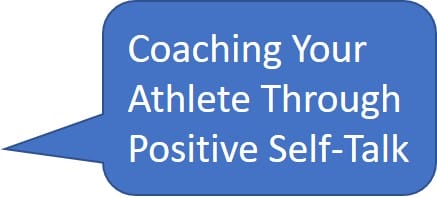 If you have conversations in your head this is a form of self-talk. We all do it, but many of us don’t realise the power it has. It can take many forms: unstructured and rambling, negative or positive, planned and rehearsed.
If you have conversations in your head this is a form of self-talk. We all do it, but many of us don’t realise the power it has. It can take many forms: unstructured and rambling, negative or positive, planned and rehearsed.
During a rally break, there is plenty of time to talk with yourself. I guess maybe you do that already. Have you noticed how much you can say in such a short time?
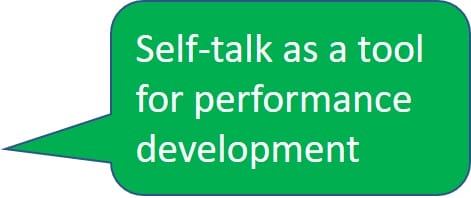 I suggest that you try out and develop self-talk strategies with the goal of finding something that works for you. Your intention is to be comfortable with the voice in your head.
I suggest that you try out and develop self-talk strategies with the goal of finding something that works for you. Your intention is to be comfortable with the voice in your head.
Talk with your coach or a friend and discuss how you all use Self Talk. Hopefully, they can give you ideas that you could try.
Read these 2 links opposite for some practical ideas, each will only take 2-3 minutes of your time.
Having control of your self-talk is more important than having perfect technique, it’s far more important!
Trigger words or Phrases
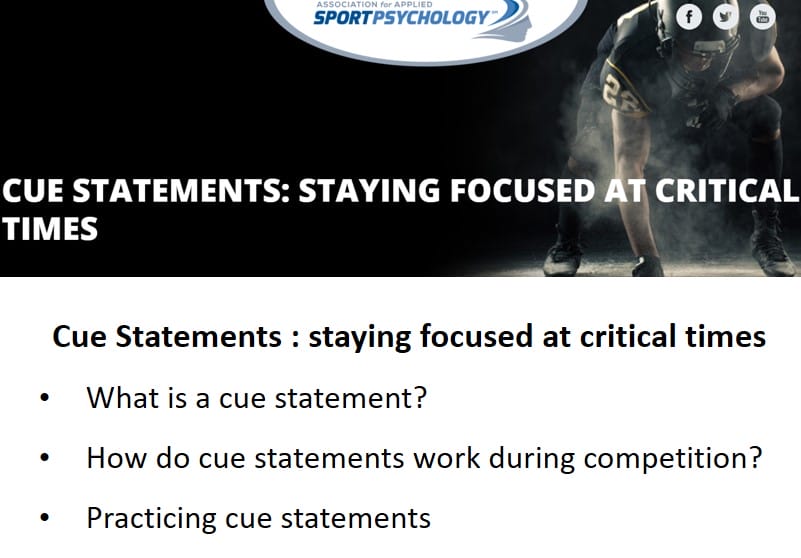 Many players use Trigger words or phrases, do you?
Many players use Trigger words or phrases, do you?
These are single words or short phrases that you say to yourself. Words that you have practised using and importantly, know that they will work for you. These words said in the right way will trigger a mindset or physical feeling that you desire and enjoy.
If you are someone who has favourite words please write a comment at the bottom and share your thoughts.
I’m sure there are players and coaches reading this who need to hear what you have to say.
Here are some of the Trigger words that I know players use. They sometimes say them out loud but they can be equally powerful when said quietly in your head.
Trigger Words : Steady, Hold, Vamos, Lets Go, My Time, Be Cool, Inside, Be strong, Safe Return, Breathe
Trigger Phrases : “This is my Time”, “Be cool”, “Be a Dog”, “I can do this”, “I’m strong”, MORE !!
I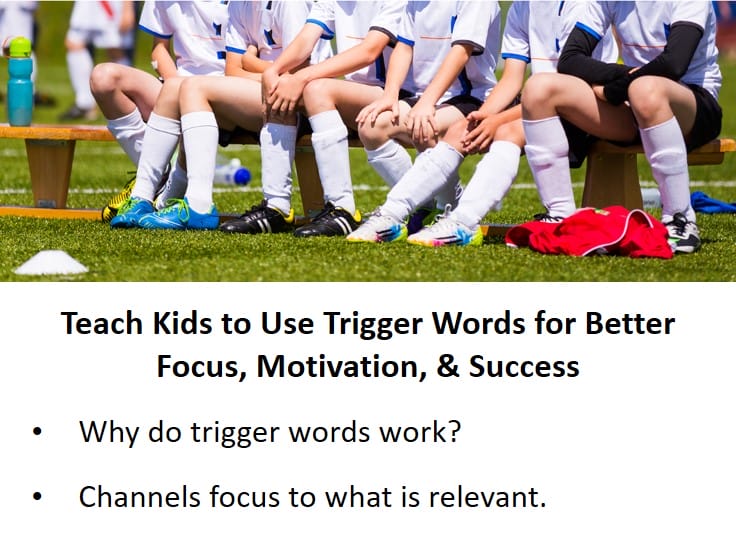 f you are a coach do you encourage your players to find their own words, maybe some of these above? Sit down and work with the players to discuss what words they may be using right now. You could be surprised at how many have experimented with trigger words.
f you are a coach do you encourage your players to find their own words, maybe some of these above? Sit down and work with the players to discuss what words they may be using right now. You could be surprised at how many have experimented with trigger words.
Please don’t underestimate the power of trigger words. They can move players from a state of panic or confusion to one of confidence and readiness. Some players Write them on their hand, have written cards in their bag to read while warming up at tournaments.
Post these Trigger words around your room, in the bathroom, in your training hall. If you see them on a daily basis it will help. However, remember, they MUST mean something to YOU.
Physical Actions
You don’t need just to use words to change how you feel during the rally break. Many players use physical actions to help themselves. I’ve seen these 3 very common ones. They seem to be linked with finishing one rally and starting the next.
If you currently do any of the 3, are they deliberate and do you use them to intentionally prepare yourself?
- Bouncing on the spot
- Walking in small circles
- Blowing on their hand
It’s important to have a Trigger that you can use to break a negative cycle or as a reminder when your mind wanders
– – – – – – – – – – – – – – – –
4 How to focus your attention and create ‘thinking moments’
Sometimes it’s so stressful during the rally break you just cant think!
Is this true for you?
You might not want to agree with this statement, but it does happen. In some situations, you can make very strange decisions.
Choices like deciding to hit that crosscourt slow drop on the return of serve, because you haven’t used it all match and you believe that it will surprise them! Is that a great plan when you are 18-19 down and receiving?
These tips below will hopefully give you some ideas and suggestions for how to immediately control your emotions as the last rally finishes. To create those moments when you can “think” and start to control that rush of emotion.
Breathe
 Everyone needs to breathe, but doing it with purpose and for a reason is different. There are many good reasons for using breathing techniques at critical points. Try exhaling (breathing out with a little force) and imaging blowing out all your tension and anger.
Everyone needs to breathe, but doing it with purpose and for a reason is different. There are many good reasons for using breathing techniques at critical points. Try exhaling (breathing out with a little force) and imaging blowing out all your tension and anger.
Do you think you could make it work for you?
I think that this is a technique you should take seriously if you find that your emotions overwhelm you between points. Many players have developed rituals to use in the rally break that involves breathing.
The obvious ones are where you see players blowing onto their racket hand. The effect may be minimal but the ritual can help the player prepare to play, if its something they do as a habit with the intent to create a thinking moment.
If you work with a Sports Physiologist I’m sure you can develop different on and off court breathing techniques, different visualisations, different rituals as to how and when it’s done.
Remember, you need to practice. You may need to work with someone other than your coach to maximise the effect. If you already use breathing techniques or ritual during the rally break, would you be willing to share your thoughts?
Spot on your hand
Have you thought about sticking a spot of the back of your hand so that at the start of the rally break you had a trigger prepared? Looking at the spot could help you. Does this sound strange?
Train yourself to believe that the spot can provide you with the stimulus you need to start your rally break ritual. Looking closely at it and linking this to “Its now time to think and plan”
If you do this already, I would be very grateful if you could share some thoughts on why it works for you. I’m sure there are many players, coaches and parents reading this who would love to know how powerful this method is.
Bubble over the court
My mentor Roger Mills (All England Mixed Champion and multiple England National winner) used to tell me a story about a method he used. He said that for him it was very effective when playing in a hall with hostile crowds and his concentration and mind started be wander.
In order to eliminate the crowd noise from his mind, he used his bubble method
During the match or when the crowd started to affect him, he would take a moment and imagine that there was a large bubble all over his court. He could see that all around the court the bubble was perfectly sealed onto the floor. This separated him from the crowd, their efforts to distract him could not work. There was now a moment of silence in his head
Roger said that he would then look directly at his opponent during the rally break and say quietly to himself,
it’s just you and me, your crowd can’t influence me anymore, let’s play!
 Straightening your strings
Straightening your strings
Have you ever noticed players looking at, or appearing to move their strings at the end of a rally?
It’s not just to check if they are straight and broken. Of course, in a small way it is, but it’s often far more than that. Look at their faces when they touch their strings.
This method, if practised can immediately change your focus. Use this action as a Trigger to start to think about what to plan for the next rally or phase of the game.
You must believe that the touching or looking deeply into the strings can help you.
If you think it’s strange and won’t work then start to look at matches of very good players and see how many could be using this technique.
Use your Coach
 I wonder if you will like this suggestion?
I wonder if you will like this suggestion?
I’m hoping that some of you will comment in support or against it, I really don’t mind which.
If you are struggling in a match and feeling confused or distracted then use your coach. If they are sitting behind you then look at them. They are there to help so use them!
Some people may see this as a player showing weakness or a coach dominating a player. If it works for you then call it “Teamwork”.
However, like all the other tips you must practice using it and both you and your coach understand how to act and what trigger words to use.
It’s not as simple as just looking at the coach or having the coach shout back at you.
The rules currently allow for a coach to sit close to the court and communicate between rallies. So, my recommendation is, consider using this method to improve your rally break rituals and strategies. Work together and talk about how you both can help. What different methods could you use?
Working with the Coach is about improving together and creating rally break strategies and triggers
Checking the shuttle
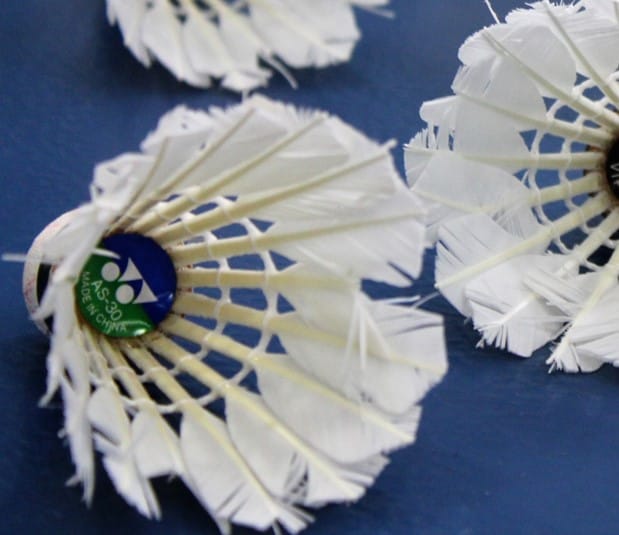 As with checking the strings, checking the shuttle can cause you to remove yourself for a moment from the emotions of the match.
As with checking the strings, checking the shuttle can cause you to remove yourself for a moment from the emotions of the match.
Have you thought about making it a habit to check the shuttle whenever you feel emotional?
Or, if you want before every serving rally. Even if you have lost the rally, hold it, check it before giving it back. Please don’t just push it back under the net.
Making this a habit can create those moments that you will be able to use to prepare.
Warning: you may not initially like checking or changing the shuttle very few rallies. Try out the Conditioned Game that requires multiple shuttle changes.
It’s not as easy as you may think to maintain a ‘game head’ whilst constantly checking and changing the shuttle
– – – – – – – – – – – – – – – –
5 It’s all in a Ritual
 This is the most powerful of all the points here.
This is the most powerful of all the points here.
All of the above points contribute to a ritual. It’s up to you to decide what to include.
If you don’t use a ritual of some type then how can you prepare for the next rally?
If the idea is new to you then read on with an open mind. I promise that the ideas in this post all work for some people, so choose the ones you like and start developing them.
I believe that you must try and develop a ritual that works for you.
They can change over time and you may have different ones for various situations.
However, just having a ritual that you use during the rally break doesn’t mean that you will win the next point!
A ritual can be defined as ‘a certain behaviour or action that a performer carries out with the belief that these behaviours have a specific purpose or power, to influence their performance’
– – – – – – – – – – – – – – – –
6 Practice with Intent & Learn to use the rally break
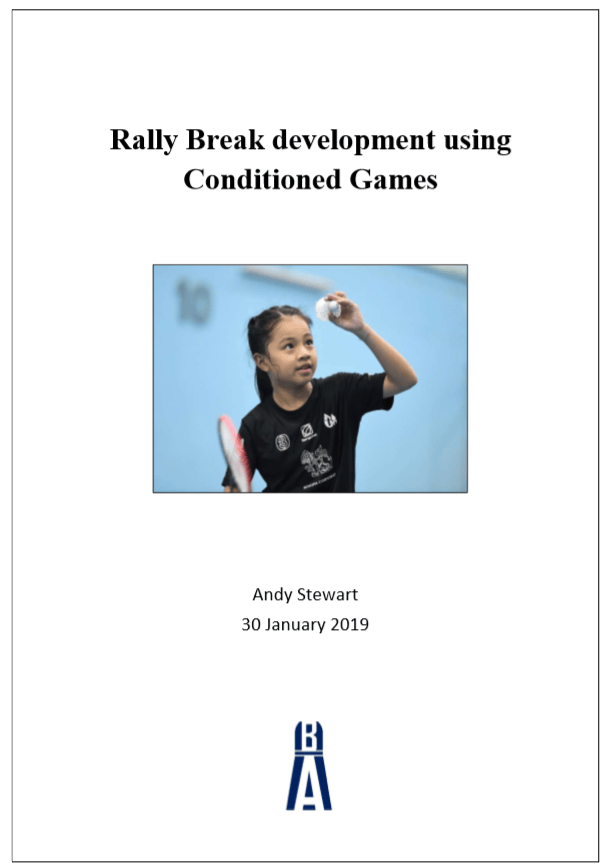
This is probably the most difficult of all the tips here to implement.
It will require you to create situations for your practice. You need to be committed to trying new actions and thoughts. Hopefully, you will have the support of your coach.
If you are a coach, you will need to persuade your players of the value. You may find some help in the post 6 Ways to Coach the same thing.
You may decide to start improving your rally breaks immediately, the next time you play matches. However, if your practice doesn’t include enough ‘match play’ you could ask your coach to try some of these singles Conditioned Games.
… Rally Break Time
… Serving and Receiving styles and rituals
… Changing the shuttle
… Self-Talk
… Thick Skin & Distraction
What to include in your practice
I recommend that in order to become better at using Rally Breaks you need to include and allow for the following elements in your practice – on and off the court
- Discussion with other players, coaches and Sports Physiologists about the use of Rally Breaks..
- Your ritual. Whatever you decide to include in your ritual, NOW is the time to practice and try it out.
- Conditioned games that have the objective of allowing you to practice your rituals. They must include rally breaks, sometimes extended breaks.
- Observation of better players: what they do between points and when preparing to serve or return.
- A desire to try new things – be brave if you wish to succeed
Warnings and Challenges
Just playing the games will not give you the thoughts, spoken words, actions or rituals to use in the rally break. You must contribute and be prepared to work, to tire mentally.
The purpose of the Conditioned Games is to provide you with different situations when a rally break technique could be required.
You may initially experience some displeasure or feel uncomfortable when trying them. Don’t expect immediate improvement from your suffering. Work with people to improve just as you would with a stroke or movement technique issue.
I’ve met some players who say that they prefer NOT to think between points as it distracts them
I understand what they mean and can appreciate that they have a view
However, I cannot accept this as a long-term view
Be aware that your Coach may also be challenged by you if you show a desire to practice your rally break rituals.
They may be required to change the style and content of their sessions. Not all coaches will be experienced or content in doing this.
The lack of physical, technical or multi drills and the requirement to coach these hidden skills can be tough. Even more so if they believe that this is an area only developed by ‘experience’ and ‘maturity’.
– – – – – – – – – – – – – – – – – – – – – – – – – – –
Summary
Next time you watch a tournament on television try this challenge. Watch how the best players prepare for each rally. Can you spot what rituals or habits they like to do?
I wonder if these actions change for the Big Points?
If already use the rally break and have plans and rituals, then keep going. If you don’t use the rally break or have never thought about practising what to do, then now is your time to start.
Coaches, I believe that you have no choice!
Create situations and work with your players to use the Rally Break
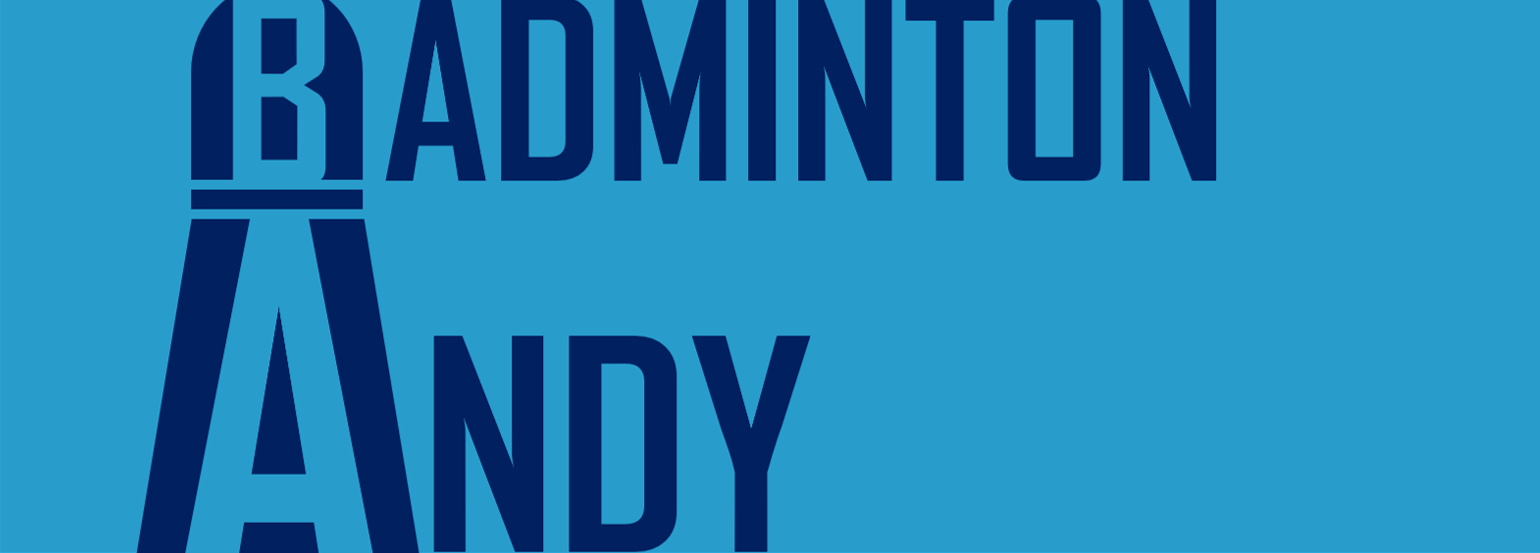

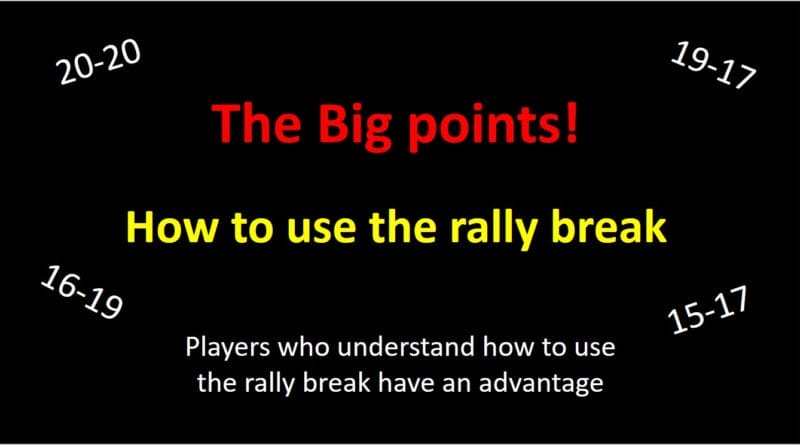

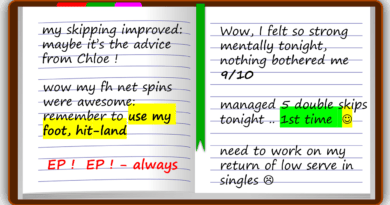
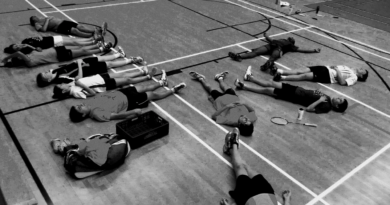

This is a huge topic for me. Young players have no idea how to use it, its great you have put this together. I find it strange when I physically go through it with young players how they have no idea it happens all the time.
Thanks for the comment Stewart. I would be really interested if any of the 5 Conditioned Games linked in the post help your players. I’ve found that approaching players with at least 3 or 4 different ways of engaging them in a skill like this can be interesting and challenging for both players and coaches. However, the rewards of this often slow development in the improving the Rally Break far out way any additional multi shuttle session they may do.
Please let us all know any reactions to the Games.
https://badmintonandy.com/reserach_docs/rally-break-development-by-using-conditioned-games/
This is so good Andy. I had never thought about it. No coaches have ever shown or told me this when I was a player or a coach. If you think about its all about psychology and mental training to help Tactics. I will have to put it into practice for my matches and then try to teach it to my players.
Hey Dina, thanks for the comment and the honest words. I agree with you and wonder how much of this information is included in coaching manuals or general coach “talk”.
Please let me know if you are able to combine the ideas into your singles play and if it was easy or difficult 😉